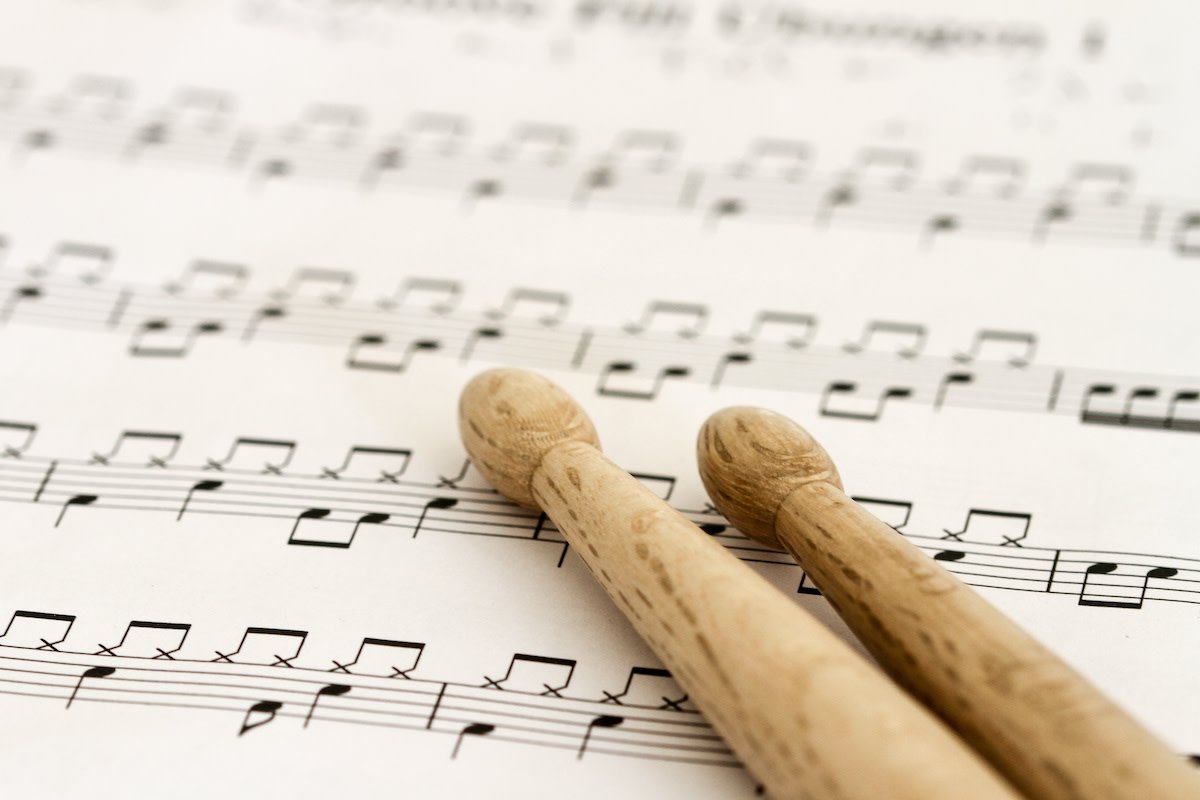
Richmond Drum Lessons Education Center
Reading Drum Notation
Rhythm Tree & Note Values
As you can see from the diagram below it shows you how notes are related. Understanding how it works is the key to understanding time signatures and note values. Here is a version of the rhythm tree from the whole note (semibreve) to the sixteenth note (semiquaver). As you can see, the notes divide 2:1, i.e., each note divides into 2 notes, both of which are half the value of the original note. The US note names are on the left and the UK note names are on the right.
How to Read Drum Sheet Music
The drumkit has its own form of music notation, simply called drum notation. Drum transcriptions appear on the same five-line music staff used for melodic instruments, but instead of staff lines and spaces representing different pitches, they represent other drums and cymbals within the drum set. Drum notation typically uses the natural clef, also known as the percussion clef, instead of a treble, bass, tenor, or alto clef.
The bass drum, snare drum, floor tom, and rack toms (hi tom and low tom), each have a space on the staff and are written with an elliptical notehead. Cymbals, including hi-hat, ride cymbals, splash cymbals, and crash cymbals appear with "x"-shaped noteheads. The note stems point downward to indicate when a player sounds a note with their feet, as with a kick drum or a hi-hat. Stems point upward when notes are played using handheld beaters, like drumsticks, rods, mallets, or wire brushes.
A Basic Guide to Drum Notation
Every piece of your drum setup has a place on the staff. This is the most important thing to memorize when learning to read drum sheets as those notes will tell you which drums to play.
Here’s an image to show you where every drum and cymbal are placed on a bar. Take note, drum notation is somewhat fluid, meaning different people notate it differently sometimes. You’ll see a ride cymbal written on top of the line sometimes and beneath it other times.
Repeat Bars
The Basics
There are a few basic concepts and layouts of sheet music that you need to know before you start reading. Think of these things as the structures that hold sheet music together. They give you direction and tell you what the limits are.
Staff
The first thing you’ll see is the staff. These five lines hold all the notes in all the bars, giving you a platform to read from.
Percussion Clef
A clef tells you how the notes on the staff are described. Depending on what instrument you’re playing, the type of clef will change. When reading drum notes, you’ll see the percussion clef at the beginning of every staff line on a page. The percussion clef tells you that you’re going to be playing drum notes.
Time signature
The time signature is the number that follows the percussion clef. The top number tells you how many beats there are in a bar. The bottom number tells you how fast or slow you’re going to count those beats.
That’s generally the easiest way of understanding time signatures. Luckily, most drum sheet music is in 4 over 4 time, so we’ll stick with that for now.
Rhythmic Durations in Drum Music
The key rhythmic durations in drum music are the whole note, the half note, the quarter note, the eighth note, and the sixteenth note. Each of these notes sounds for one-half the duration of the note before it. For instance, a half note is one-half the duration of a whole note, a quarter note is one-half the duration of a half note, and so forth. They are notated as follows:
3 Common Time Signatures for Drum Music
Note durations lead to musical time signatures, which dictate the duration of each beat in a measure of music and the number of beats per measure. Common time signatures for drum music include:
1. 3/4 time signature: This time signature, called 3/4, indicates that there are three beats per measure and each beat has the duration of a quarter-note.
2. 6/8 time signature: The 6/8 time signature indicates that there are 6 beats per measure and each beat has the duration of an eighth note.
3. 4/4 time signature: The most frequently used time signature in western music is 4/4, which indicates four quarter-notes per measure. Because of this frequent use, 4/4 is often called “common time” and is sometimes indicated with a “c.”
Advanced rhythmic notation goes much further, involving tuplets, accents, grace notes, and durations much shorter than a sixteenth note.







